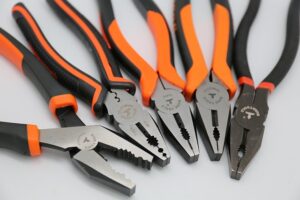Pipes require regular care for optimal performance, addressing issues like leaks, corrosion, and mineral buildup. Common damage types include moisture-related corrosion, mineral deposits, cracks, and bursts. Accurate assessments determine repair methods, from coatings to full replacements. Basic tools and knowledge enable DIY repairs for minor issues, while complex problems necessitate professional plumbers. Regular maintenance, including inspections, insulation, cleaning, and descaling, extends pipe lifespans and reduces repair costs.
In the realm of plumbing, pipe maintenance and repairs are essential aspects that every homeowner and professional should be aware of. Pipes, being the backbone of any water distribution system, are prone to various issues due to wear, tear, corrosion, or environmental factors. Understanding common pipe problems and their causes is the first step towards effective maintenance. This article guides you through assessing pipe damage, equipping yourself with essential tools for repairs, and offers a comprehensive step-by-step approach to tackling basic pipe repair tasks. Learn when to seek professional help and discover preventative measures to ensure the longevity of your pipes.
Understanding Common Pipe Issues and Their Causes
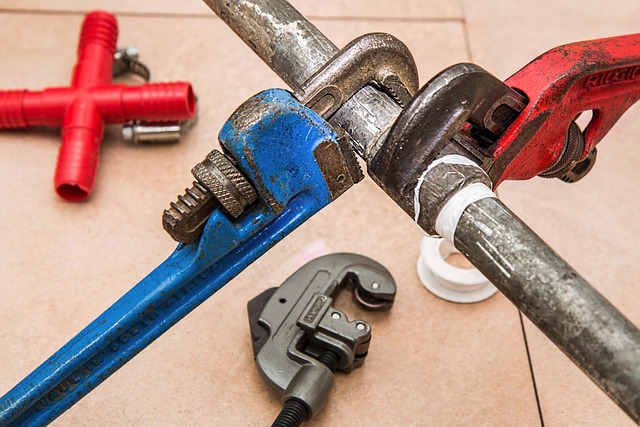
Pipes are an essential part of any plumbing system, and like all components, they require regular care and attention to maintain optimal performance. Understanding common pipe issues is crucial for effective pipe repair and maintenance. Leaks, corrosion, and damage from mineral buildup are frequent problems that can be caused by various factors.
Water pressure, age, material quality, and environmental conditions play significant roles in these issues. For instance, over time, pipes may corrode, especially in areas with high moisture content or corrosive water supplies. Mineral deposits, like calcium and magnesium, can build up, narrowing the pipe’s interior and reducing water flow, a condition often referred to as scaling. Recognizing these potential problems is the first step in implementing effective pipe repair strategies.
Assessing Pipe Damage: Types and Degrees
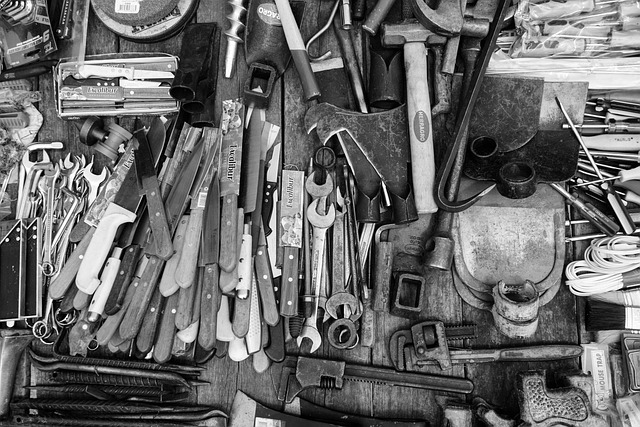
Pipe damage can vary greatly in type and severity, making an accurate assessment crucial for effective pipe repair. Understanding the nature and extent of the damage is the first step in any restoration project. Common types include corrosion, leaks, cracks, and bursts, each presenting unique challenges. Corrosion, often caused by exposure to moisture or chemical substances, can range from surface rust to complete metal breakdown. Leaks might be subtle, seeping over time, or dramatic, gushing water. Cracks can appear as hairline fractures or wider breaks in the pipe’s structure. Bursts, typically due to pressure buildup or material fatigue, result in sudden and significant breakdowns.
Evaluating these damages involves careful observation and, if necessary, non-invasive techniques like visual inspections and pressure tests. In some cases, further diagnostics are required. The degree of damage dictates the repair method; minor corrosion might be treated with coatings or replacement sections, while extensive leaks or bursts may demand full pipe replacement. Accurately assessing the issue ensures that the chosen pipe repair solution is both efficient and cost-effective.
Essential Tools and Equipment for Repairs

When it comes to pipe repairs, having the right tools is crucial for a successful and efficient job. The essential tools for any pipe repair kit include a variety of wrenches, both open-end and adjustable, to cater to different pipe sizes and fittings. Pliers, specifically needle-nose pliers, are indispensable for gripping and bending metal without causing damage. A good set of screwdrivers, including flathead and Phillips varieties, is also necessary for tightening or removing various components.
Additionally, a multi-tool or a utility knife can be handy for cutting through pipe insulation or accessing hard-to-reach areas. For sealing leaks, a selection of pipe thread tape, waterproof sealants, and silicone grease are essential items. These tools, combined with basic knowledge of pipe repair techniques, will empower homeowners and professionals alike to tackle common pipe issues effectively.
Step-by-Step Guide to Basic Pipe Repairs
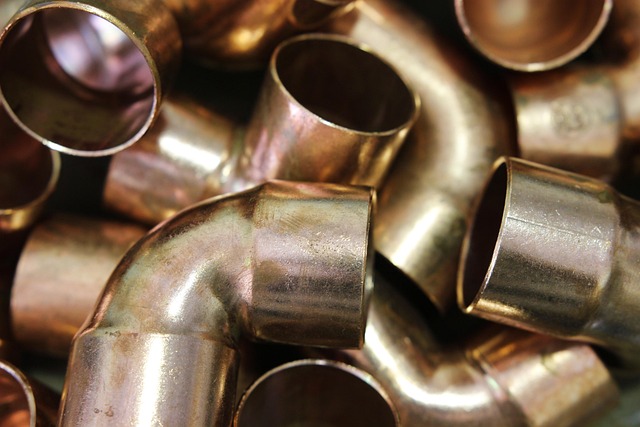
Pipe repairs are a common home maintenance task that can save you money and prevent costly leaks. Here’s a step-by-step guide for tackling basic pipe repairs:
1. Identify the problem: Start by pinpointing the source of the leak or damage. Check for signs like dripping water, moist patches, or unusual noises coming from the pipes. This will help you determine if it’s a simple fixture issue or a more complex pipe replacement job.
2. Gather the right tools and materials: Depending on the extent of the repair, you might need plumber’s tape, epoxy putty, replacement fittings, or even entirely new sections of pipe. Always have a bucket of water, towels, and gloves handy for safety and to contain any spills.
3. Turn off the water supply: Before beginning any repair work, it’s crucial to shut off the water valve connected to the affected pipe. This prevents water from flowing during the repair process and reduces the risk of flooding.
4. Remove the damaged section: Carefully cut out or unscrew the damaged portion of the pipe using tools like a hacksaw, plumber’s knife, or socket wrench. Ensure you have a good understanding of how the pipes are connected before removing any fittings.
5. Clean and prepare the area: Use a wire brush or sandpaper to clean the ends of the pipes and remove any rust or debris. This step is essential for ensuring a secure connection when reassembling the pipe.
6. Apply repair material: Depending on the type of damage, use plumber’s tape or epoxy putty to seal joints and prevent leaks. Follow the manufacturer’s instructions carefully for best results.
7. Reassemble and test: Replace the pipes or fittings, tightening them securely. Turn on the water supply and check for leaks. If everything is sealed tightly, you’ve successfully completed your pipe repair.
When to Call in the Professionals
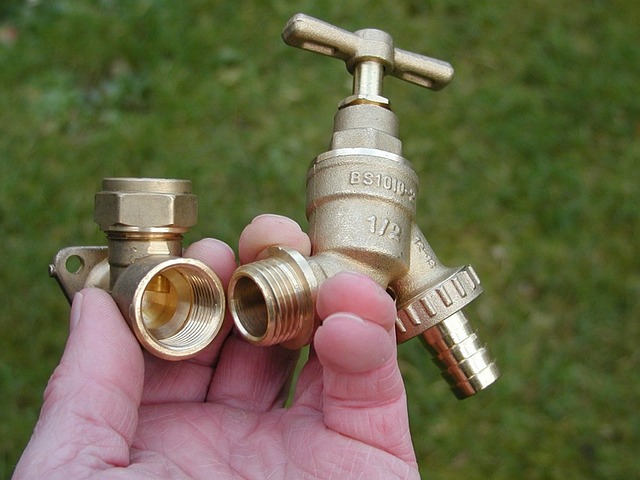
If you’re faced with a leaky pipe, a clogged drain, or a burst pipe, it might be tempting to attempt DIY repairs immediately. However, not all pipe issues are suitable for amateur troubleshooting. Complex problems like severe pipe corrosion, structural damage from root intrusion, or extensive leaks often require the expertise of professional plumbers. They possess the specialized tools and in-depth knowledge needed to accurately diagnose the issue and implement effective, long-lasting solutions for pipe repair.
Professional plumbers can also help prevent further damage by offering maintenance tips and recommendations tailored to your plumbing system. Their services ensure that any repairs are executed safely and efficiently, leaving you with a reliable and secure piping system. When in doubt, or faced with challenging pipe issues, calling in the professionals is the best course of action for effective and enduring pipe repair.
Preventative Measures for Longevity

Regular maintenance and preventative measures are key to extending the lifespan of pipes, thereby reducing the need for costly pipe repairs. One effective strategy is to schedule periodic inspections to identify potential issues early on. This proactive approach allows for quick fixes before minor problems escalate into major crises. During these inspections, professionals should check for signs of corrosion, leaks, or any structural damage that could compromise the integrity of the pipes.
Additionally, keeping pipes well-insulated, especially in areas prone to extreme temperature fluctuations, is vital. Insulation prevents sudden temperature changes from causing expansion and contraction, which can lead to cracks and leaks over time. Regular cleaning and descaling are also essential to prevent buildup that can obstruct pipes and impact water flow, potentially leading to pressure-related issues and the need for pipe repairs.
